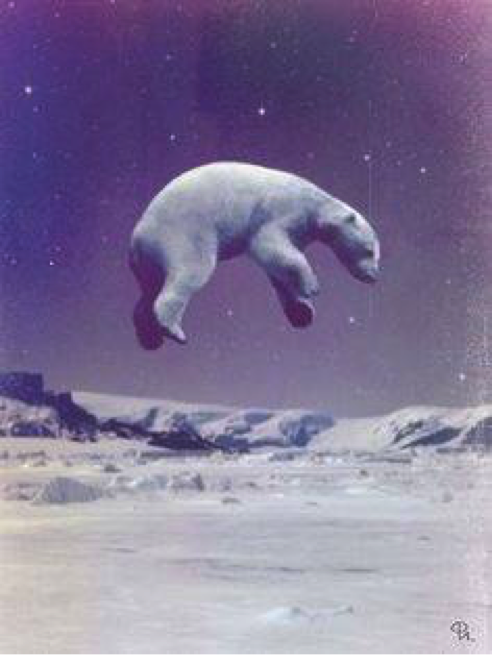The following post, written by Dr. Elena Cirkovic (HSE St. Petersburg/Faculty of Law, UH), outlines a recent presentation she offered on her current research project. The talk was given on 2.13.2019 at an Aleksanteri Institute working seminar.

“I will put some trust in preceding navigators—there snow and frost are banished; and, sailing over a calm sea, we may be wafted to a land surpassing in wonders and in beauty every region hitherto discovered on the habitable globe. Its productions and features may be without example, as the phenomena of the heavenly bodies undoubtedly are in those undiscovered solitudes. What may not be expected in a country of eternal light? I may there discover the wondrous power, which attracts the needle and may regulate a thousand celestial observations that require only this voyage to render their seeming eccentricities consistent forever. I shall satiate my ardent curiosity with the sight of a part of the world never before visited, and may tread a land never before imprinted by the foot of man.”
Frankenstein, or the Modern Prometheus -Mary Wollstonecraft (Godwin) Shelley (1817)
International law currently appears to function in tension with a variety of processes, to which it cannot easily respond. This article focuses on the current environmental degradation in outer space and in the Arctic (here analyzed as part of the broader Earth System), in contrast to increased commercialization of the two spaces. In addition, technological advances and the uses of autonomous operations further facilitate the current and/or future possibilities for the commercialization processes.
This topic requires an interdisciplinary approach, which will address not only the public-private regulatory aspects, but also the disciplinary limits of law in addressing the Arctic and outer space. It proposes a principle to encompass the process through which the law would recognize and include the agency of the non-human: the cosmolegal. The principle would help define an interdisciplinary theoretical and methodological approach to law. Instead of aiming to give the complete picture of world dynamics, cosmolegality will have to leave a free parameter or some disjunction for future contingencies and uncertainties on Earth and in outer space. A recasting of the legal discipline, which would address its ontological leaks, would have a direct effect on future lawmaking.
The argument for cosmolegality takes into account the novel changes in perceptions of spatiality and agency on Earth and outer spacetime caused by the following three situations. First, the Earth System has been responding to human action and climate change in its own and unpredictable ways. The Arctic sea ice reached its 2018 minimum on September 23, once again below the 1981-2010 average. Since satellites began tracking Arctic sea ice nearly 40 years ago, we’ve now seen the 12 lowest Arctic sea ice minimums all in the last 12 years.[1] In June 2017, Science published a paper with the title “Massive blow-out craters formed by hydrate-controlled methane expulsion from the Arctic seafloor”.[2] The research team found evidence of large craters embedded within methane-leaking subglacial sediments in the Barents Sea, Norway. However, this phenomenon has been also taking place in the Eastern Siberia’s defrosting tundra. There is no climate model that can currently respond to this. The Sediments in the East Siberian Arctic shelf could further trigger climate warming.
The release of CH4 into Arctic waters and the atmosphere, which was heretofore trapped under the now receding ice sheets, threatens to accelerate the pace of climate change. They proposed that the thinning of the ice sheet at the end of recent glacial cycles decreased the pressure on pockets of hydrates buried in the seafloor, resulting in explosive blowouts. This created the giant craters and released large quantities of sedimentary methane (CH4) into the water above. This means that upon ice sheet retreat, CH4 from this hydrate reservoir concentrated in massive mounds before being abruptly released to form craters. The authors of the study propose that these processes were likely widespread across past glaciated petroleum zones and that they also provide an analog for the potential future destabilization of sub-glacial gas hydrate reservoirs beneath contemporary ice sheets.[3] However, the retreating ice also allows for state and private commercial interests in the Arctic areas beyond national jurisdiction (ABNJs), which can further impact global warming. This is of great significance for the Arctic States, including the Russian Federation. Domestic legislation however, differs widely. This is the ‘Arctic paradox’[4] of independent reactions of the Earth System[5] due to global warming, as well as the human interest in commercialization.[6]
Second, the orbital environment is also subject to rapid degradation due to the human-made space debris.[7] The accumulating debris in the orbital environment is partly already a consequence of the commercial use of telecommunications in space.[8] The ‘The Declaration of Legal Principles Governing the Activities of States in the Exploration and Uses of Outer Space’, known as the Outer Space Treaty (OST) regime, was formed prior to the new knowledge of geophysical-technological interaction that creates the space debris problem. This article will address the increasing proposals for commercialization of the outer space and the potential for the mining of celestial bodies. It argues that these proposals again create a paradox in relation to the growing problems induced by climate change on Earth, as well as the increasing problem of human-made orbital debris.
Third, the role of autonomous Artificial Intelligence (AI), and specialized autonomous machine learning is advancing further and/or future access to both, the deep-sea and outer space. This demonstrates how state and private interests are driven by new technologies, and are simultaneously benefiting from and further contributing to climate change. State capacity to control an area with technology, has played a vital role in the conquest of final frontiers.[9] Robotic and autonomous technologies have the similar potential in the outer space and deep-sea contexts.
The earthly or orbital environmental concerns, however, can conflict with the ongoing economic, political, and strategic interests of states and extractive industries. Private actors, and more specifically, the extractive industries pose the question of sovereign state access and encroachments into new spaces beyond national jurisdiction and the relevance of contemporary international law. This article analyses together the cases of the Arctic and the outer space because they are both subject to the current state-extractive industry promotion of a ‘rush’ for resources in newly accessible spaces.
Ultimately, the cosmolegal proposes legal change not only through new laws in the disruptive novel space-time contexts but also through recognition and inclusion of the agency of the non-human. To reiterate, the main objective of this research is a proposal for a new ontology of law through an interdisciplinary reconceptualization. Cosmolegality leaves a free parameter for future contingencies on Earth and in outer space, by indicating that there is always a coefficient of friction that changes over time and requires long-term thinking and learning about the world.
[1] The National Environmental Satellite, Data, and Information Service (NESDIS), https://www.nesdis.noaa.gov/
[2] K. Andreassen et. al., ‘Massive blow-out craters formed by hydrate-controlled methane expulsion from the Arctic seafloor’, 2017, Science 6341, at 948.
[3] Ibid.
[4] Lassa Heininen
[5] Earth System
[6] Andreassen et al
[7] L. Viikari, The Environmental Element in Space Law. Assessing the Present and Charting the Future (2007).
[8] Ibid.
[9] D. R. Headrick, The Invisible Weapon: Telecommunications and International Politics 1851-1945 (1991).

